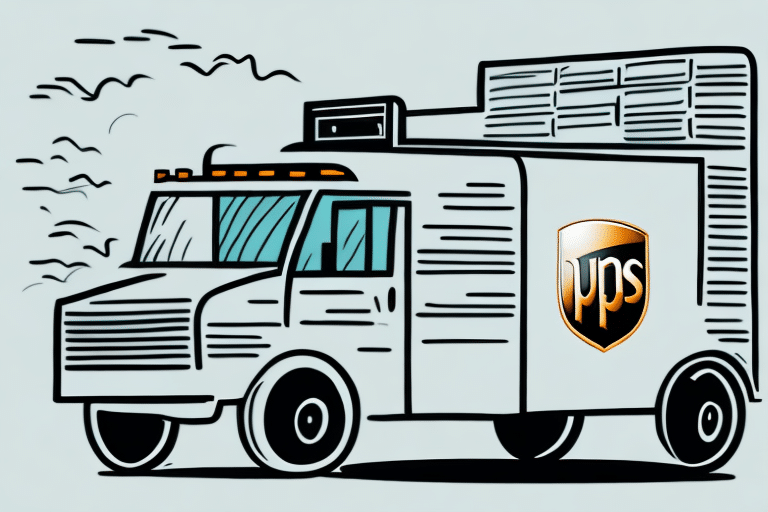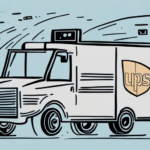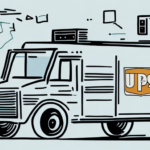Understanding the UPS Bill Receiver Surcharge: A Comprehensive Guide
As a business owner, managing shipping costs is crucial to maintaining profitability. While you might be familiar with standard shipping fees, there are additional charges that can significantly impact your bottom line, such as the UPS Bill Receiver Surcharge. This guide delves into what this surcharge entails, its implications for your business, and strategies to manage and reduce these costs effectively.
What is a UPS Bill Receiver Surcharge and Why is it Important?
The UPS Bill Receiver Surcharge is a fee imposed on the recipient of a shipment rather than the sender. When businesses use UPS to deliver products, the end customer may incur this additional cost during the shipping process.
Understanding this surcharge is vital because it directly affects your shipping expenses. Failing to account for this fee in your pricing strategy can erode your profit margins. Moreover, being aware of how this surcharge varies based on factors like destination ensures more accurate cost projections.
For detailed information on UPS surcharges, refer to the official UPS Surcharges Page.
How the UPS Bill Receiver Surcharge Affects Your Business Costs
Impact on Shipping Expenses
The UPS Bill Receiver Surcharge can accumulate quickly, especially for businesses that frequently ship large or heavy items. The fee varies based on the package's weight, dimensions, and destination. For instance, sending a 50-pound package from New York to Los Angeles might incur a surcharge of approximately $5.25 per package.
While $5.25 may seem negligible for a single shipment, businesses shipping hundreds of packages monthly can see this cost escalate significantly. According to a 2023 Statista report, shipping costs account for up to 28% of total e-commerce expenses, highlighting the importance of managing these fees effectively.
Additional UPS Fees
The Bill Receiver Surcharge is not the sole fee businesses may encounter when shipping with UPS. Other surcharges include:
- Fuel Surcharges: Adjusted based on fluctuating fuel prices.
- Residential Delivery Fees: Applied when delivering to a residential address.
- Processing Fees for Remote Areas: Charged for delivery to hard-to-reach locations.
Understanding and accounting for all applicable fees is essential for accurate shipping cost management.
Negotiating Rates with UPS
Businesses that consistently ship large volumes may have the leverage to negotiate lower rates with UPS. Engaging with your UPS account representative to discuss potential discounts or adjusted fee structures can help mitigate the impact of receiver surcharges.
The History of the UPS Bill Receiver Surcharge: How it Came About
The UPS Bill Receiver Surcharge was introduced in 2010 as a response to rising operational costs, including fuel prices and infrastructure investments. This surcharge aimed to help UPS maintain profitability amid increasing expenses.
Over the years, many other shipping carriers have adopted similar surcharge models to manage their own rising costs.
Despite its intended purpose, the surcharge has faced criticism from customers who view it as an unnecessary burden. Critics argue that instead of imposing additional fees, UPS could consider more transparent pricing models.
Nonetheless, UPS maintains that the surcharge is a necessary component to sustain their service quality and operational efficiency. They emphasize transparency by clearly communicating these fees to customers before shipment finalization.
The Different Types of UPS Bill Receiver Surcharges and Their Rates
UPS imposes several types of receiver surcharges, each with distinct rate structures:
1. Residential Surcharge
Applied to shipments destined for residential addresses. The fee varies based on the service level and package weight. For example, standard ground shipping to a residential address may incur a $4 surcharge, while expedited services could be higher.
2. Large Package Surcharge
Charged for packages exceeding specific size or weight limits. This surcharge starts at $90 per package and can increase depending on the dimensions and weight.
3. Additional Handling Surcharge
Imposed on packages requiring special handling, such as irregular shapes or hazardous materials. The base fee for this surcharge begins at $24 per package.
4. Delivery Area Surcharge
Applied to deliveries in remote or challenging locations, with fees ranging from $0.50 to $6.00 per package, depending on the area's accessibility.
These surcharges can cumulatively elevate shipping costs, making it essential for businesses to factor them into their shipping budgets.
How to Calculate the UPS Bill Receiver Surcharge for Your Shipments
Using the UPS Shipping Calculator
The most straightforward method to estimate the UPS Bill Receiver Surcharge is by utilizing the UPS Shipping Calculator. By inputting package weight, dimensions, destination address, and desired service level, businesses can receive an estimated total shipping cost, inclusive of all applicable surcharges.
Factors Influencing the Surcharge
- Service Level: Expedited services like next-day delivery typically attract higher surcharges compared to standard ground shipping.
- Package Type: Oversized or hazardous materials shipments may incur additional fees beyond standard surcharges.
- Destination: Deliveries to remote or international locations can lead to higher surcharges.
It's advisable to consult the latest UPS surcharge guidelines or contact UPS directly for the most accurate and updated information.
Tips for Managing and Reducing Your UPS Bill Receiver Surcharges
Effectively managing UPS Bill Receiver Surcharges can lead to significant cost savings. Here are actionable strategies to consider:
- Optimize Service Levels: Whenever possible, opt for ground shipping instead of expedited options to benefit from lower surcharges.
- Choose Alternative Shipping Carriers: Explore carriers like FedEx or DHL, which may offer more favorable surcharge structures for your shipping needs.
- Consolidate Shipments: Reduce the number of packages by consolidating shipments, thereby minimizing the number of surcharged deliveries.
- Utilize UPS Technology Tools: Tools like UPS Address Validation can ensure accurate delivery addresses, reducing the incidence of returned packages and associated surcharges.
- Negotiate with UPS: Engage with your UPS account manager to discuss potential discounts or customized surcharge agreements based on your shipping volume.
Common Misconceptions about the UPS Bill Receiver Surcharge
Several misunderstandings surround the UPS Bill Receiver Surcharge:
- Applicability: Contrary to popular belief, the surcharge applies to both residential and certain commercial deliveries, not exclusively residential ones.
- Package Size: While oversized packages do attract higher surcharges, standard-sized packages can also incur fees based on destination and service level.
- Transparency: Some believe the surcharge is a hidden fee; however, UPS clearly outlines these charges on invoices and during the shipping process.
Clarifying these misconceptions helps businesses better anticipate and manage shipping costs.
How Other Shipping Carriers Compare to UPS in Terms of Receiver Surcharges
Understanding how UPS's surcharge structure compares to other carriers can aid in making informed shipping decisions:
FedEx
FedEx imposes similar surcharges, including residential delivery fees and large package surcharges. The rates may differ, making it essential to compare based on your specific shipping patterns.
US Postal Service (USPS)
Unlike UPS and FedEx, the USPS does not impose a specific Bill Receiver Surcharge. However, they have their own set of fees and pricing structures that vary based on package type and delivery speed.
DHL
DHL charges for residential deliveries and extended area deliveries, particularly in remote locations. Their surcharge rates are comparable to UPS and FedEx, depending on the destination.
When selecting a shipping carrier, consider not only the base rates but also the surcharge structures to determine the most cost-effective option for your business needs.
What to Do if You Dispute a UPS Bill Receiver Surcharge
If you believe a UPS Bill Receiver Surcharge has been incorrectly applied, follow these steps to dispute the charge:
- Review Your Invoice: Ensure that the surcharge was applied based on the correct criteria, such as destination and package specifications.
- Contact UPS Customer Service: Reach out to UPS through their Customer Service channels to discuss the disputed charge. Provide all relevant shipment details and documentation.
- Provide Evidence: Supply any evidence that supports your claim, such as shipping records or address verification.
- Follow Up: Stay in communication with UPS to track the progress of your dispute and ensure a resolution is reached.
Successfully disputing an incorrect surcharge can result in refunds or credits, helping to maintain your shipping budget.
Conclusion
The UPS Bill Receiver Surcharge is a significant factor in shipping logistics that businesses must account for to manage costs effectively. By understanding the various types of surcharges, utilizing available tools and strategies, and staying informed about industry practices, businesses can mitigate the financial impact of these fees. Additionally, regularly reviewing and negotiating with UPS or alternative carriers can further optimize your shipping expenses, ensuring sustained profitability and operational efficiency.
For more detailed information and updates on UPS surcharges, visit the official UPS Surcharges Page.




















